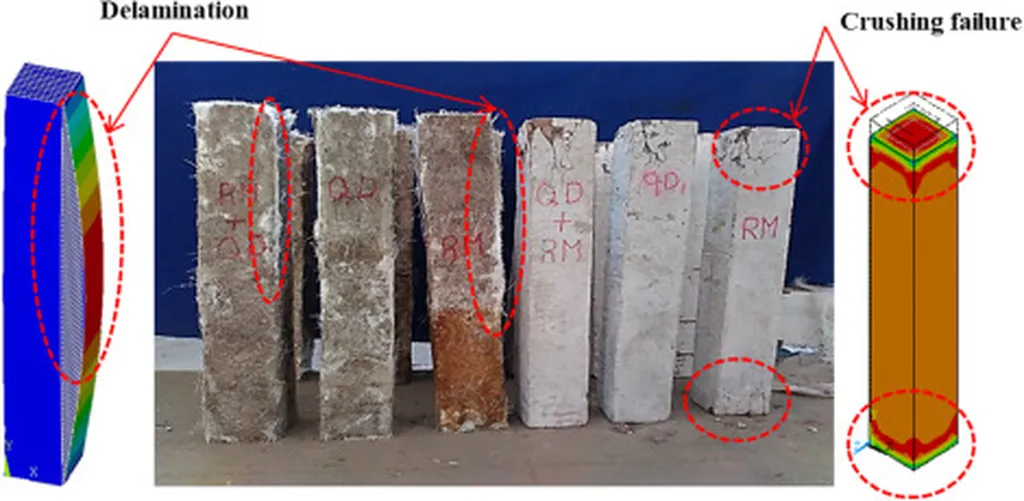In the quest for sustainable construction materials, a recent study has uncovered a promising blend of industrial byproducts that could revolutionize the way we build concrete columns. Led by Pradeep Thangavel from the Research Unit in Data Science and Digital Transformation at Thammasat University in Thailand, the research explores the use of red mud (RM) and quarry dust (QD) as sustainable substitutes for cement and fine aggregates in concrete, offering a viable solution for large-scale utilization of these industrial byproducts.
The study, published in *Results in Engineering* (which translates to *Engineering Outcomes*), focused on the axial performance of concrete columns strengthened with glass fiber-reinforced polymer (GFRP) wrapping. By replacing varying levels of cement with red mud and fine aggregates with quarry dust, the researchers aimed to optimize the mixture for structural integrity and sustainability.
“Our goal was to find the optimal proportions of red mud and quarry dust that would not only enhance the performance of concrete columns but also contribute to environmental sustainability,” said Thangavel. The team discovered that a combination of 10% red mud as a cement replacement and 60% quarry dust as a fine aggregate replacement yielded the best results, achieving a notable compressive strength of 33.12 MPa.
The experimental findings were further validated using finite element modeling (FEM), which accurately simulated failure modes and stress distributions. This numerical approach provided critical insights into the buckling behavior and load capacity of the columns, emphasizing the influence of column geometry on performance.
The implications of this research are significant for the construction industry, particularly in the energy sector where sustainable and durable materials are in high demand. The use of red mud and quarry dust not only reduces the environmental impact of construction but also offers a cost-effective solution for large-scale projects.
“By incorporating these sustainable materials, we can enhance the load capacity and ductility of concrete columns, making them more resilient and environmentally friendly,” Thangavel explained. The study highlights the potential of red mud, quarry dust, and GFRP wrapping as sustainable materials that could shape the future of construction.
As the industry continues to seek innovative solutions for sustainable development, this research paves the way for the adoption of industrial byproducts in construction, offering a promising alternative to traditional materials. The findings not only validate the structural viability of these sustainable materials but also open new avenues for research and development in the field of civil engineering.

